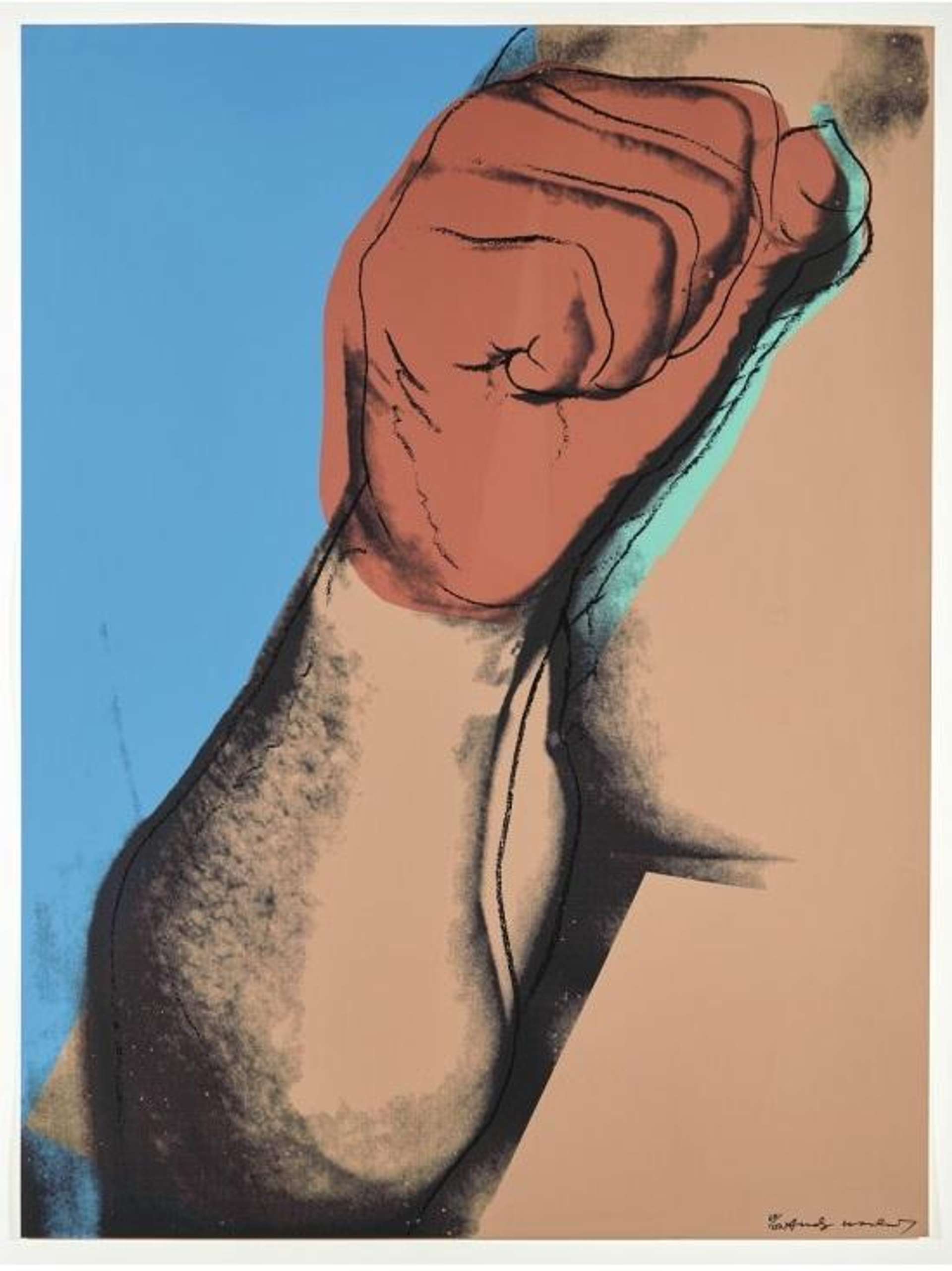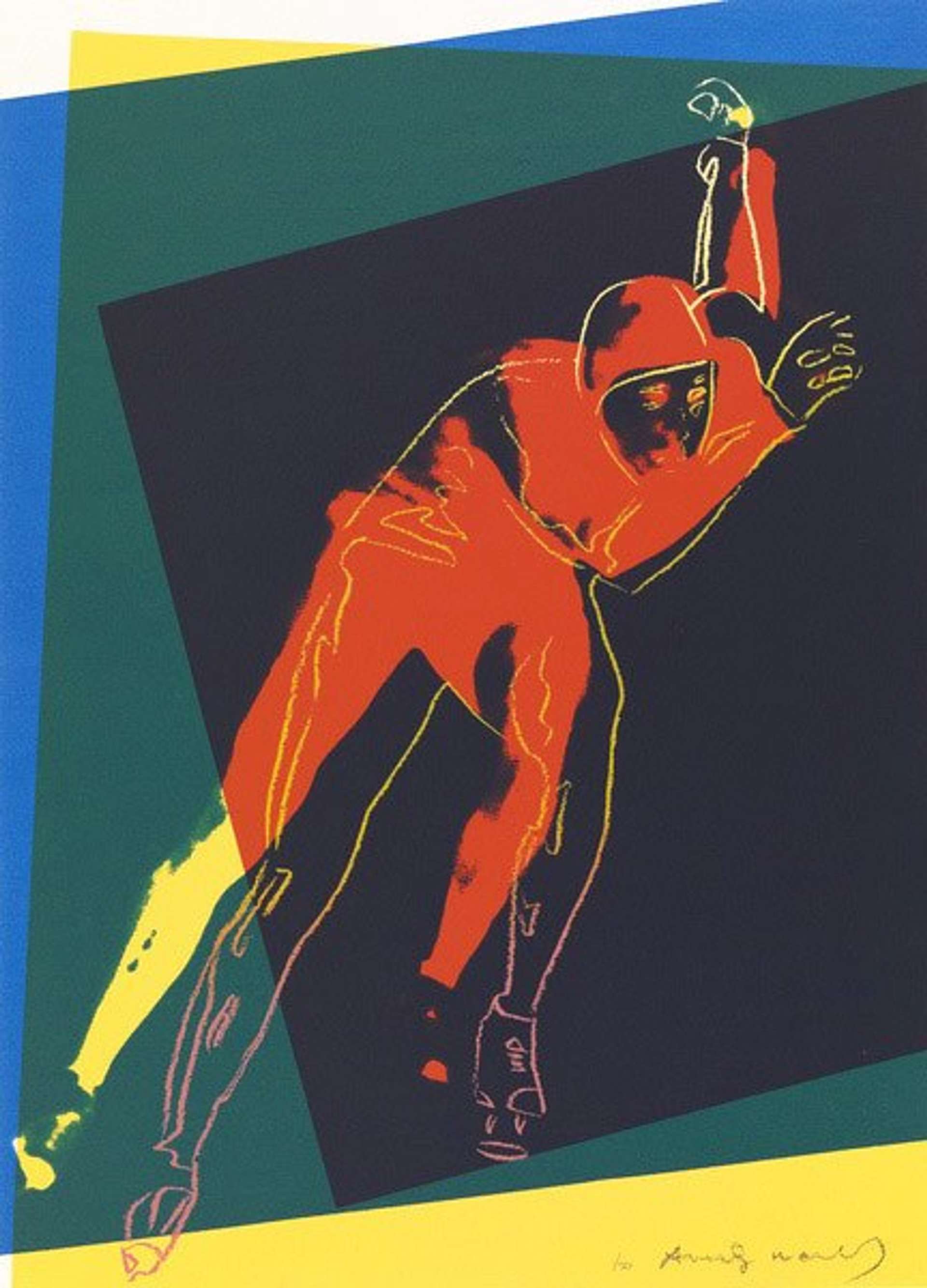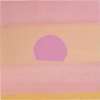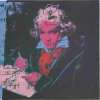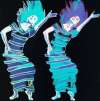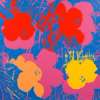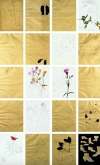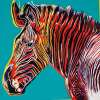Muhammad
Ali
Andy Warhol published his Muhammad Ali portfolio in 1978, one of several sports portraits commissioned by art collector and sports enthusiast Richard Weisman. Working from his own Polaroids, Warhol showcases Ali’s prize-winning fists in two of the four screen-prints, in tension with the two more introspective ¾ headshots.
Andy Warhol Muhammad Ali for sale

£210,000-£320,000Value Indicator
$410,000-$620,000 Value Indicator
$360,000-$550,000 Value Indicator
¥1,910,000-¥2,920,000 Value Indicator
€250,000-€370,000 Value Indicator
$2,070,000-$3,160,000 Value Indicator
¥40,110,000-¥61,130,000 Value Indicator
$260,000-$400,000 Value Indicator
TradingFloor

£28,000-£40,000Value Indicator
$50,000-$80,000 Value Indicator
$50,000-$70,000 Value Indicator
¥250,000-¥360,000 Value Indicator
€35,000-€45,000 Value Indicator
$270,000-$390,000 Value Indicator
¥5,330,000-¥7,610,000 Value Indicator
$35,000-$50,000 Value Indicator
TradingFloor
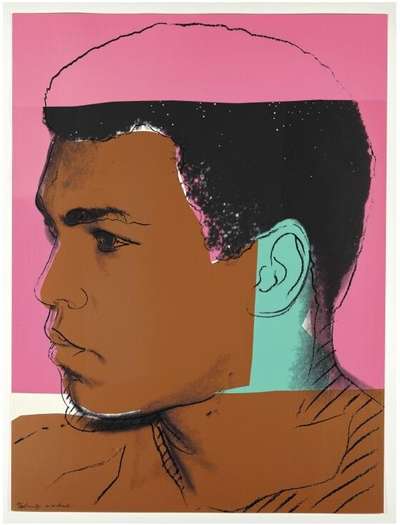
£100,000-£160,000Value Indicator
$190,000-$310,000 Value Indicator
$170,000-$270,000 Value Indicator
¥910,000-¥1,460,000 Value Indicator
€120,000-€190,000 Value Indicator
$990,000-$1,580,000 Value Indicator
¥19,100,000-¥30,560,000 Value Indicator
$130,000-$200,000 Value Indicator
TradingFloor
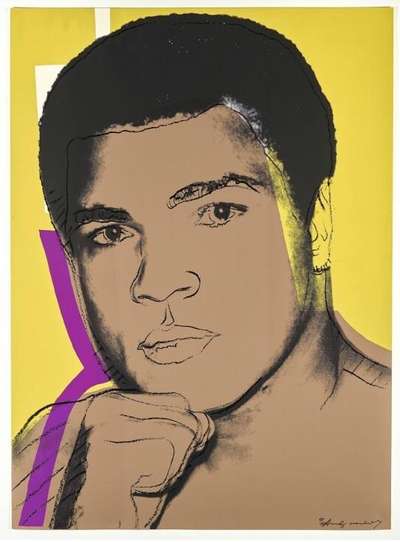
£100,000-£150,000Value Indicator
$190,000-$290,000 Value Indicator
$170,000-$260,000 Value Indicator
¥910,000-¥1,370,000 Value Indicator
€120,000-€180,000 Value Indicator
$990,000-$1,480,000 Value Indicator
¥19,100,000-¥28,650,000 Value Indicator
$130,000-$190,000 Value Indicator
TradingFloor
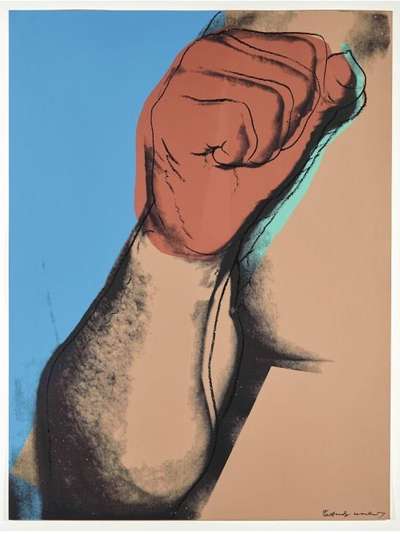
£20,000-£30,000Value Indicator
$40,000-$60,000 Value Indicator
$35,000-$50,000 Value Indicator
¥180,000-¥270,000 Value Indicator
€23,000-€35,000 Value Indicator
$200,000-$300,000 Value Indicator
¥3,820,000-¥5,730,000 Value Indicator
$25,000-$40,000 Value Indicator
TradingFloor
Sell Your Art
with Us
with Us
Join Our Network of Collectors. Buy, Sell and Track Demand
Meaning & Analysis
Reflecting on his work in 1977, Warhol stated his love for depicting athletes, like Muhammad Ali here, was “because they are the really big stars.” He was consistently drawn to the representation of figures in the public eye, from his earliest screen prints of Elizabeth Taylor and Marilyn Monroe to his later representations of Vladimir Lenin. However, it was not until 1977 that Warhol began to represent sports stars, as the artist recalled “I really got to love the athletes because they are the really big stars.” This included his screen prints of the world-famous boxer Muhammad Ali, images that would become some of the most sought after works of Warhol’s career.
Warhol’s Muhammad Ali portfolio was first commissioned by art collector and sports enthusiast Richard Weisman as part of a series dedicated to sports figures. Among the athletes featured were Chris Evert and Jack Niklaus. In 1978 when Warhol’s Muhammad Ali screen prints were first published, Ali was already regarded as a sporting hero, having just become the World Boxing Association Heavyweight Champion for the third time. He was renowned for his agility and stunned both opponents and spectators with his consistency, winning fight after fight for more than a decade. Unlike many of Warhol’s screen prints, in this instance Warhol himself shot the original photographs of the sitter, travelling to Ali’s training camp in Pennsylvania to photograph and interview the boxer.
Warhol shot 56 polaroids of Ali, but selected four specifically for his screen prints. In one image, Warhol captures the star’s side profile, his eyes alert as though ready to fight. In another, Ali is shown in a combative pose, his fists raised, and his eyes locked firmly to the viewer, as though challenging his opponent. Ali’s combative stance also strongly evokes the theme of violence, a subject that Warhol first introduced in his Death and Disaster series. In this image, Warhol once again takes advantage of the public fascination with violence, perhaps suggesting that this has in itself contributed to Ali’s superstardom. His raised fists become symbolic also in their significance as the tools of his trade; a trade that defines Ali’s identity in the public eye and in popular culture.

